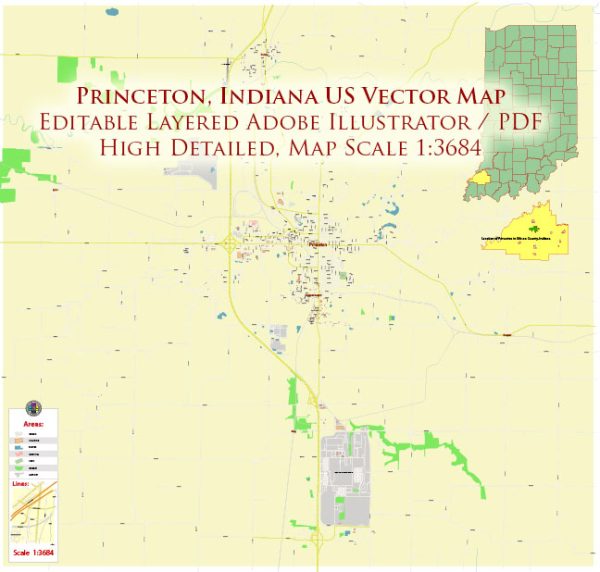General outline of how many American towns and cities, including those in Indiana, typically developed.
- Early Settlement (18th and 19th centuries):
- Princeton’s history likely began with the arrival of European settlers, who were attracted to the area for its natural resources, fertile land, and waterways.
- Early development would have included the establishment of farms, trading posts, and small businesses to support the growing population.
- Transportation and Industry (19th century):
- The 19th century saw significant developments in transportation, with the expansion of railroads playing a crucial role. This often led to the growth of towns situated along these transportation routes.
- Industries, such as agriculture, manufacturing, or mining, contributed to economic growth. In Indiana, agriculture has historically been a major industry.
- Population Growth and Infrastructure (late 19th to early 20th centuries):
- As the population grew, towns like Princeton would have expanded, necessitating the development of infrastructure such as schools, hospitals, and utilities.
- The late 19th to early 20th centuries saw the rise of urban planning movements, which influenced the layout and design of cities and towns.
- World Wars and Post-War Era (20th century):
- The two World Wars had significant impacts on American towns and cities, influencing economic activities and population dynamics.
- The post-war era often saw suburbanization trends, with people moving away from city centers. This might have influenced the development patterns in Princeton as well.
- Modern Era (late 20th century to present):
- Economic changes, technological advancements, and cultural shifts continued to shape urban development.
- Preservation efforts and community initiatives might have played a role in maintaining or revitalizing historic areas.
To get detailed and up-to-date information about Princeton’s specific history, you might want to consult local historical societies, archives, or city records. Local libraries, museums, and online resources can also provide valuable insights into the urban development of Princeton, Indiana.


 Author: Kirill Shrayber, Ph.D.
Author: Kirill Shrayber, Ph.D.